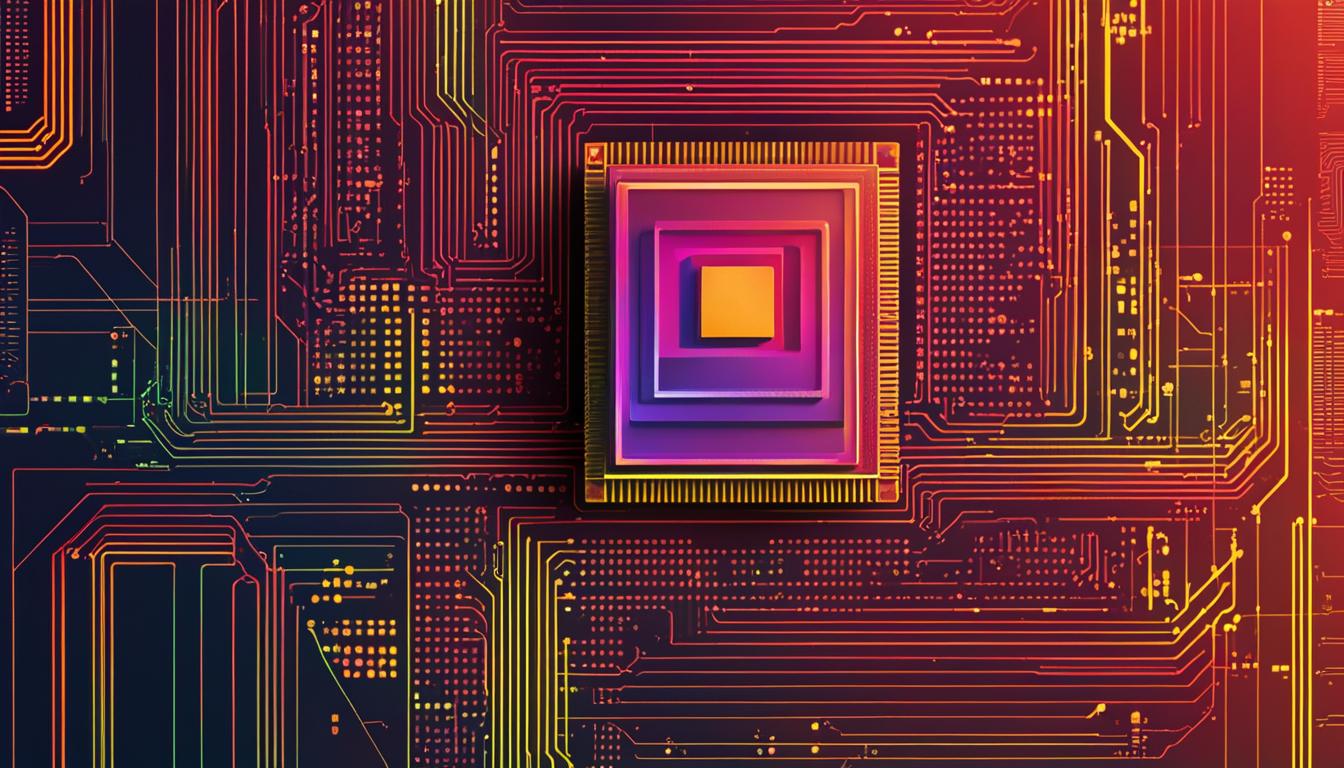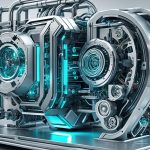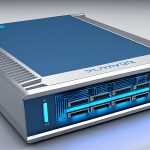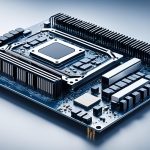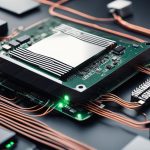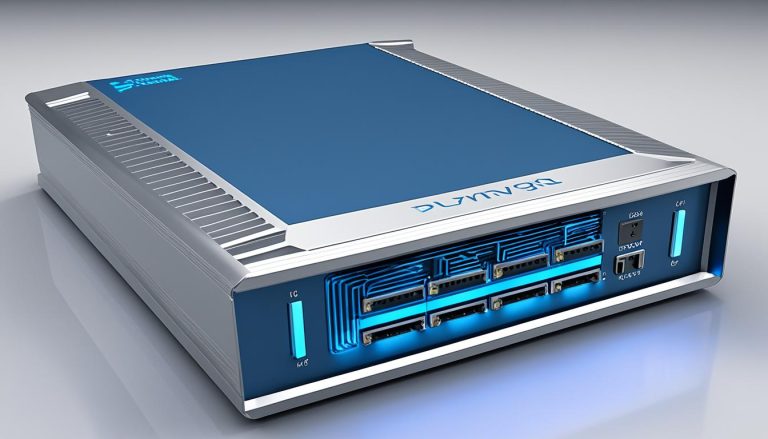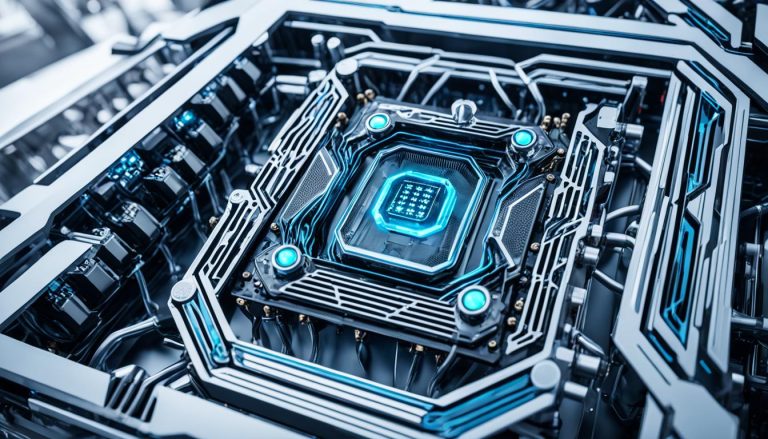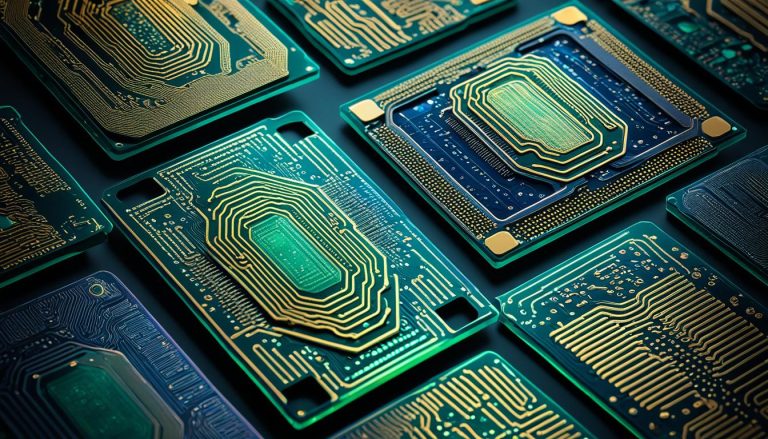As the field of artificial intelligence continues to advance, benchmarking AI hardware has become crucial for developers and researchers. By utilizing AI hardware benchmarks, they can effectively assess the performance, evaluate resources, validate models, conduct competitive analysis, establish credibility, and ensure regulation and standardization.
In this article, we will explore the importance of benchmarking in AI hardware and how it enables developers to optimize their systems for maximum performance and energy efficiency.
Key Takeaways:
- AI hardware benchmarks play a vital role in performance assessment and resource evaluation.
- Validation and verification of AI models and systems can be achieved through benchmarking.
- Competitive analysis using benchmarks helps developers stay ahead in the rapidly evolving AI landscape.
- Credibility of AI hardware can be established by benchmarking against industry standards.
- Regulation and standardization are facilitated by the use of benchmarking metrics in AI hardware.
Understanding Different Types of AI Benchmarks
When it comes to benchmarking AI systems, there are different types of benchmarks that serve specific purposes. These benchmarks help evaluate and compare the performance of different models, architectures, and deployment strategies. Let’s explore the three main types of AI benchmarks: micro benchmarks, macro benchmarks, and end-to-end benchmarks.
Micro Benchmarks
Micro benchmarks focus on specific components or functionalities of an AI system. They allow developers to measure and evaluate the performance of individual parts, such as a specific layer in a neural network or a mathematical operation in a machine learning algorithm. These benchmarks are designed to provide insights into the fine-grained aspects of AI systems and assess their efficiency and effectiveness at a granular level.
Macro Benchmarks
Macro benchmarks, on the other hand, evaluate the overall performance of an AI system as a whole. They consider the system in its entirety, including all its components, and assess how well it functions in real-world scenarios. Macro benchmarks help developers gauge the system’s capability to handle complex tasks and provide a holistic view of its performance across various use cases.
End-to-End Benchmarks
End-to-end benchmarks simulate complete real-world scenarios and evaluate the entire pipeline of an AI system, from input to output. These benchmarks are designed to measure the system’s performance in a practical setting and provide comprehensive insights into its capabilities. End-to-end benchmarks can be particularly useful in assessing the system’s ability to handle complex tasks, such as image recognition or natural language processing.
Regardless of the benchmark type, there are several key components that play a crucial role in evaluating AI systems:
- Datasets: The quality and diversity of datasets used for training and evaluation.
- Tasks: The specific tasks or problems that the AI system is designed to solve.
- Metrics: The evaluation metrics used to measure the system’s performance, such as accuracy, precision, recall, or F1 score.
- Reproducibility Rules: Guidelines and protocols that ensure the reproducibility of benchmark results for validation purposes.
Integrating these components and carefully considering the different types of benchmarks can lead to valuable insights about the performance and capabilities of AI systems. It allows developers and researchers to make data-driven decisions, optimize their models, and drive innovation in the field of AI.
“Understanding the different types of AI benchmarks is crucial in assessing the performance and capability of AI systems. Micro benchmarks, macro benchmarks, and end-to-end benchmarks each provide valuable insights into specific aspects of an AI system’s performance.”
Importance of System Benchmarking in AI Hardware
When it comes to AI hardware, system benchmarking plays a crucial role in measuring and optimizing performance. By analyzing metrics such as throughput, latency, power consumption, and computational efficiency, developers gain valuable insights into the performance and efficiency of their AI systems. This information enables them to make data-driven decisions in order to achieve maximum performance and energy efficiency.
System benchmarking helps developers identify bottlenecks and areas for improvement in their hardware and software configurations. By measuring throughput, which refers to the amount of data processed within a given time frame, developers can assess the system’s ability to handle workloads efficiently. Low latency, or the time it takes for a system to respond to a stimulus, is another important metric that impacts real-time applications. Power consumption is a critical consideration for AI hardware, as optimizing energy efficiency can lead to cost savings and environmental benefits. Finally, computational efficiency evaluates the system’s ability to perform complex calculations efficiently, ensuring optimal resource utilization.
By benchmarking their AI hardware systems, developers can compare their performance against industry standards and identify areas where they excel or need improvement. This allows them to stay competitive and relevant in a rapidly evolving industry.
In addition to optimizing performance, system benchmarking also helps build trust and credibility in AI hardware. By conducting transparent benchmarking processes, developers can provide evidence of their system’s capabilities, enabling users, customers, and stakeholders to make informed decisions. Benchmarking data can also serve as a valuable resource for regulatory purposes and standardization efforts within the industry.
Overall, system benchmarking is a critical practice in AI hardware development. It empowers developers to optimize their systems for maximum performance and energy efficiency, establish industry standards, and build trust with customers and stakeholders.

System Benchmarking Metrics
| Metric | Description |
|---|---|
| Throughput | The amount of data processed within a given time frame, indicating system efficiency |
| Latency | The time it takes for the system to respond to a stimulus, affecting real-time applications |
| Power Consumption | The amount of electrical power consumed by the system, impacting energy efficiency and cost |
| Computational Efficiency | The system’s ability to perform complex calculations efficiently, optimizing resource utilization |
Evolution of Benchmarks in AI Hardware
The evolution of benchmarks in AI hardware has come a long way since the early days of computing. Back then, benchmarks were rudimentary and primarily designed for mainframe computers. They aimed to measure basic performance metrics and provide a basis for comparison among different systems.
However, as AI technology progressed and the demand for more accurate and sophisticated benchmarks increased, the need for standardization became apparent. This led to the introduction of industry-standard benchmarks, such as the Standard Performance Evaluation Corporation (SPEC) benchmark in the 1980s.
Standard benchmarks like SPEC played a crucial role in providing a neutral and standardized way to assess and compare the performance of various computer systems in a fair and consistent manner.
These standard benchmarks provided a common language and framework for performance assessment across the industry. They allowed developers, users, and researchers to gauge and validate the capabilities of AI hardware effectively.
As the field of AI expanded and became more diverse, the requirement for custom benchmarks emerged. Custom benchmarks address the need to evaluate AI performance in specific applications or tasks that may not be adequately captured by standard benchmarks.
Custom benchmarks are designed to mimic real-world scenarios and provide insights into AI performance under specific conditions. They enable developers to fine-tune their systems and optimize performance based on the unique requirements of their applications.
Industry benchmarks continue to evolve along with advancements in AI hardware and software. The focus has shifted from measuring basic performance metrics to assessing specialized aspects, such as energy efficiency, real-time inference capabilities, and specialized workloads.
Today, a combination of standard benchmarks, custom benchmarks, and industry benchmarks provides a comprehensive framework for assessing and comparing the performance of AI hardware. This approach ensures a more accurate and holistic evaluation of AI systems, leading to informed decision-making and continuous improvement.
Benchmarks in AI Hardware Evolution Timeline
| Decade | Milestone |
|---|---|
| 1960s | Benchmarking focuses on basic performance metrics for mainframe computers |
| 1980s | Introduction of standard benchmarks like SPEC for neutral and standardized performance assessment |
| 2000s | Rise of custom benchmarks to evaluate AI performance in specific applications or tasks |
| 2010s | Integration of industry benchmarks targeting specialized aspects of AI hardware |
The Power of Benchmarks in Driving Breakthroughs
The story of Roger Bannister breaking the four-minute mile barrier illustrates the transformative power of benchmarks in driving breakthroughs. Bannister’s achievement shattered long-standing performance barriers and sparked a wave of motivation and aspiration among athletes worldwide.
Before Bannister’s historic run on May 6, 1954, many believed that running a mile in under four minutes was impossible. It was considered a physiological and psychological barrier that athletes couldn’t overcome. However, Bannister saw this as a challenge, not an immovable obstacle.
“The ideal condition would be, I admit, to be able to run every day over furlong and up.” – Roger Bannister
Bannister trained tirelessly, pushed his limits, and believed in the power of benchmarks to spur progress. On that fateful day at the Iffley Road track in Oxford, Bannister achieved what was once deemed impossible, clocking in at 3 minutes and 59.4 seconds.
The impact of Bannister’s feat was significant. Within a year, several other athletes also broke the four-minute mile barrier. Once they witnessed someone surpass the seemingly insurmountable benchmark, their mindset shifted. They saw that it was possible to achieve something previously considered unattainable.
The transformative power of benchmarks extends beyond the world of athletics. It can be applied to any field or industry that faces performance barriers. Benchmarks serve as standardization tools that define what is possible and inspire individuals and organizations to push boundaries.
In the context of AI hardware, benchmarks establish performance standards and metrics that guide developers and manufacturers in optimizing their systems. By setting definitive goals, benchmarks encourage the discovery of innovative approaches and solutions to surpass existing limitations.
The Role of Standardization
Standardization plays a crucial role in the effectiveness of benchmarks. When there is a widely accepted benchmark, it allows for fair and consistent comparisons between different systems, technologies, or methodologies.
For AI hardware, standard benchmarks enable manufacturers and developers to evaluate their products’ performance against a universally recognized standard. This fosters healthy competition, drives innovation, and ensures that advancements in AI hardware are measured consistently.
Moreover, standardization mitigates the risk of misleading claims or inflated performance metrics. By adhering to established benchmarks, stakeholders can have confidence in the accuracy and credibility of reported results.
Driving Innovation
Benchmarks not only serve as performance markers but also promote collaboration and knowledge sharing. When a benchmark is established, it becomes a common goal that a community strives towards collectively. This goal-oriented approach fosters collaboration, encourages the exchange of ideas, and accelerates progress.
In the context of AI hardware, benchmarks drive innovation by spurring competition and inspiring developers to find creative solutions to overcome performance barriers. By setting clear goals and benchmarks, the industry can advance rapidly, addressing challenges and unlocking new possibilities.
Conclusion
Benchmarking in AI hardware is a crucial process that allows developers to measure and optimize the performance of their systems. By utilizing benchmarks, developers can make data-driven decisions to improve efficiency, competitiveness, and drive innovation in the industry. Industry standards and benchmarks also play a vital role in shaping the direction of AI hardware development, ensuring compliance with regulations and industry standards.
Performance optimization is a key objective of benchmarking in AI hardware. By identifying areas for improvement through benchmarking, developers can make informed decisions to optimize their systems, resulting in enhanced performance and efficiency. These optimizations have a direct impact on the overall success and competitiveness of AI hardware solutions in the market.
Innovation is fostered through benchmarking in AI hardware. By continuously pushing the limits and challenging existing benchmarks, developers can drive breakthroughs and reshape what is possible in the field. Benchmarks provide a common goal for the industry to strive towards, fueling innovation and propelling advancements in AI hardware.
Industry standards and benchmarks are essential for ensuring a level playing field and consistency across the AI hardware industry. By adhering to industry standards and using recognized benchmarks, developers can validate the performance of their systems and demonstrate compliance with regulations and industry best practices. This fosters trust and confidence among consumers, researchers, and other stakeholders.
FAQ
What is benchmarking in AI hardware?
Benchmarking in AI hardware is the process of measuring and evaluating the performance of AI systems. It involves analyzing metrics such as throughput, latency, power consumption, and computational efficiency to optimize hardware and software configurations.
What are the different types of AI benchmarks?
There are three types of AI benchmarks: micro benchmarks, macro benchmarks, and end-to-end benchmarks. Micro benchmarks focus on specific components of an AI system, while macro benchmarks evaluate the system as a whole. End-to-end benchmarks simulate real-world scenarios and assess the system’s performance from input to output.
What are the key components of an AI benchmark?
The key components of an AI benchmark include datasets, tasks, metrics, and reproducibility rules. Datasets are used to train and evaluate AI models, tasks define the specific objective of the benchmark, metrics measure the performance of the system, and reproducibility rules ensure that the benchmark can be replicated by others.
How has benchmarking in AI hardware evolved over time?
Benchmarking in AI hardware has evolved from rudimentary measures designed for mainframe computers to industry-standard benchmarks like SPEC introduced in the 1980s. Custom benchmarks are now also used to evaluate AI performance in specific applications or tasks, allowing for more tailored assessments.
What is the power of benchmarks in driving breakthroughs?
The story of Roger Bannister breaking the four-minute mile barrier illustrates the power of benchmarks in driving breakthroughs. Once a performance barrier is broken and a new benchmark is set, it inspires others to achieve the same goal and pushes the boundaries of what is possible.
Why are benchmarks important in AI hardware development?
Benchmarks are important in AI hardware development because they enable developers to make data-driven decisions to improve efficiency, competitiveness, and innovation. They also play a vital role in shaping industry standards and ensuring compliance with regulations and standards.

